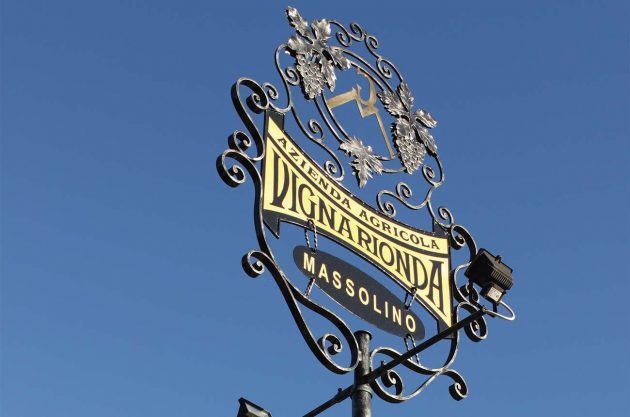The notion of single-vineyard wines, commonplace in other regions such as Burgundy and Germany, is relatively recent in Piedmont.
Until the 1960s, Barolo and Barbaresco were blended wines, using fruit from different vineyards and sectors. Some producers, such as Bartolo Mascarello, still believe this is the best approach. The estate owns vines in Cannubi, so could theoretically produce a single-vineyard wine from this great site, but Maria Teresa Mascarello believes the blend is superior to the wine she could make from this single vineyard.
Scroll down for Stephen Brook’s tasting notes and scores for MGA wines
In the 1960s, Beppe Colla and a few other growers began identifying the vineyard source on the label. Over the decades, the number of single-vineyard wines proliferated as more and more growers began vinifying and commercialising their wines rather than selling the crop to a cooperative or merchant.
{"content":"PGgzPkxhYmVsIGNvbmZ1c2lvbjwvaDM+CjxwPkl0IHN0YXJ0ZWQgdG8gYmVjb21lIGluY3JlYXNpbmdseSBkaWZmaWN1bHQgZm9yIGV2ZW4gdGhlIG1vc3QgYXZpZCBhZmljaW9uYWRvIHRvIGtlZXAgdXAgd2l0aCBhbGwgb2YgdGhlIG5ldyBsYWJlbHMsIGFuZCBhbHRob3VnaCBzb21lIHNpdGVzLCBzdWNoIGFzIEFzaWxpIGluIEJhcmJhcmVzY28gb3IgQ2FubnViaSBpbiBCYXJvbG8sIGVuam95ZWQgd2lkZXNwcmVhZCByZWNvZ25pdGlvbiwgb3RoZXJzIHdlcmUgb2JzY3VyZSwgdG8gcHV0IGl0IG1pbGRseS48L3A+CjxwPjxkaXYgY2xhc3M9ImFkLWNvbnRhaW5lciBhZC1jb250YWluZXItLW1vYmlsZSI+PGRpdiBpZD0icG9zdC1pbmxpbmUtMiIgY2xhc3M9ImlwYy1hZHZlcnQiPjwvZGl2PjwvZGl2PjwvcD4KPHA+TW9yZW92ZXIsIG1hbnkgbGFiZWxzIGRpc3BsYXllZCDigJhmYW50YXN5IG5hbWVz4oCZIHJhdGhlciB0aGFuIGEgc3BlY2lmaWMgdmluZXlhcmQgaWRlbnRpdHkuIE9uZSBleGFtcGxlIGlzIENoaWFyYSBCb3NjaGlz4oCZIGV4Y2VsbGVudCBWaWEgTnVvdmEsIHdoaWNoIGlzIGEgYmxlbmQgb2YgZGlmZmVyZW50IHNpdGVzLiBHYWph4oCZcyDigJhjcnXigJkgd2luZXMgYWxzbyBmYWxsIGludG8gdGhpcyBjYXRlZ29yeTogbGFiZWxzIHN1Y2ggYXMgdGhlIFNvcmnMgCBTYW4gTG9yZW56byByZWZlciB0byBzcGVjaWZpYyBwYXJjZWxzIHRoYXQgbGllIHdpdGhpbiBhIHJlY29nbmlzZWQgc2l0ZS4gR2FqYSBhbmQgbWFueSBvdGhlcnMgd2VyZSBlc3RhYmxpc2hpbmcgYnJhbmRzIHJhdGhlciB0aGFuIHZhbGlkYXRpbmcgdGhvc2UgaW5kaXZpZHVhbCBzaXRlcy48L3A+CjxwPkFsbCB0aGlzIHdhcyBsZWF2aW5nIGNvbnN1bWVycyBjb25mdXNlZCwgc28gdGhlIHBvd2VyZnVsIGxvY2FsIGNvbnNvcnppbyBlbWJhcmtlZCBvbiBhIHByb2plY3QgdG8gaWRlbnRpZnkgc2l0ZXMgdGhhdCBjb3VsZCBiZSBkZXNpZ25hdGVkIGFzIE1HQSAoTWVuemlvbmUgR2VvZ3JhZmljYSBBZ2dpdW50aXZhKSDigJMgaW4gc2hvcnQsIHNpbmdsZSB2aW5leWFyZHMgd2l0aCBjbGVhcmx5IGRlZmluZWQgYm91bmRhcmllcy48L3A+CjxwPkhvd2V2ZXIsIGl0IHdhcyBsZWZ0IHRvIGVhY2ggY29tbXVuZSB0byBkZWNpZGUgd2hpY2ggdmluZXlhcmRzIHF1YWxpZmllZC4gQW5kIHdoaWxlIHNvbWUgZGlkIGFuIGV4Y2VsbGVudCBqb2IsIGlkZW50aWZ5aW5nIGhpc3RvcmljYWwgc2l0ZXMgdGhhdCBoYWQgbG9uZyBiZWVuIHJlY29nbmlzZWQgbG9jYWxseSwgb3RoZXJzIHdlcmUgYnJvd2JlYXRlbiBieSBsb2NhbCBncm93ZXJzIHdobyB3YW50ZWQgdGhlaXIgd2luZXMgYXNzb2NpYXRlZCB3aXRoIGEgZmFtb3VzIG5hbWUuPC9wPgo8ZGl2IGNsYXNzPSJhZC1jb250YWluZXIgYWQtY29udGFpbmVyLS1tb2JpbGUiPjxkaXYgaWQ9InBvc3QtaW5saW5lLTMiIGNsYXNzPSJpcGMtYWR2ZXJ0Ij48L2Rpdj48L2Rpdj4KPHA+Q2FubnViaSBpbiB0aGUgY29tbXVuZSBvZiBCYXJvbG8gd2FzIGV4cGFuZGVkLCBsZWFkaW5nIHRvIGxhd3N1aXRzIGFuZCBjb3VudGVyLSBzdWl0cy4gVGhlIG1vc3Qgbm90b3Jpb3VzIGV4YW1wbGUgaXMgdGhhdCBvZiBNb25mb3J0ZSwgd2hpY2ggc2VlbWVkIHRvIHJlZ2lzdGVyIGFueSBwbGFjZSB3aGVyZSBhIGJsYWRlIG9mIGdyYXNzIGNvdWxkIGdyb3c6IHRoZSByZW5vd25lZCBCdXNzaWEgc2l0ZSB3YXMgZXhwYW5kZWQgaHVnZWx5IHRvIGFib3V0IDMwMGhhLCB0aHVzIG1ha2luZyBhIG5vbnNlbnNlIG9mIHRoZSB3aG9sZSBwcm9qZWN0OyBhbmQgdGhlIFBlcm5vIGFuZCBCcmljY28gU2FuIFBpZXRybyBzaXRlcyB3ZXJlIG5vdCBmYXIgYmVoaW5kLjwvcD4KPHA+VG9wIHByb2R1Y2Vycywgc3VjaCBhcyA8c3Ryb25nPjxhIGhyZWY9Imh0dHBzOi8vd3d3LmRlY2FudGVyLmNvbS9wcmVtaXVtL3Byb2R1Y2VyLXByb2ZpbGUtcG9kZXJpLWFsZG8tY29udGVybm8tMzg2Mzg5LyI+QWxkbyBDb250ZXJubzwvYT48L3N0cm9uZz4sLCBhZGRlZCBwYXJjZWwgbmFtZXMgc3VjaCBhcyBSb21pcmFzY28gdG8gYXNzZXJ0IHRoYXQgdGhlaXIgd2luZXMgY2FtZSBmcm9tIHRoZSBoaXN0b3JpYyBzZWN0b3IuPC9wPgo8ZGl2IGNsYXNzPSJhZC1jb250YWluZXIgYWQtY29udGFpbmVyLS1tb2JpbGUiPjxkaXYgaWQ9InBvc3QtaW5saW5lLTQiIGNsYXNzPSJpcGMtYWR2ZXJ0Ij48L2Rpdj48L2Rpdj4KPHA+VGhlIE1HQSBwcm9qZWN0IHdlbnQgaGFuZCBpbiBoYW5kIHdpdGggc3VwZXJiIGNhcnRvZ3JhcGhpY2FsIHdvcmsgYnkgdGhlIHdpbmUgd3JpdGVyIEFsZXNzYW5kcm8gTWFzbmFnaGV0dGkgd2hvLCBvbiB0aGUgYmFzaXMgb2YgbGVuZ3RoeSBpbnRlcnZpZXdzIHdpdGggZ3Jvd2VycyBhbmQgbWVyY2hhbnRzLCBjb21waWxlZCBkZXRhaWxlZCB2aW5leWFyZCBtYXBzIGZvciBhbGwgdGhlIGNvbW11bmVzIG9mIEJhcm9sbyBhbmQgQmFyYmFyZXNjbywgZXN0YWJsaXNoaW5nIOKAkyB3aGVyZSBwb3NzaWJsZSDigJMgdGhlIGJvdW5kYXJpZXMgYmV0d2VlbiBlYWNoIHNpdGUuPC9wPgo8cD48aW1nIGZldGNocHJpb3JpdHk9ImhpZ2giIGRlY29kaW5nPSJhc3luYyIgY2xhc3M9Imxhenlsb2FkIGJsdXItdXAgYWxpZ25jZW50ZXIgd3AtaW1hZ2UtNDUxMjcxIHNpemUtbGFyZ2UiIGRhdGEtcHJvY2Vzc2VkIHNyYz0iaHR0cHM6Ly93d3cuZGVjYW50ZXIuY29tL3dwLWNvbnRlbnQvdGhlbWVzL3NpbWJhLXRoZW1lL2Fzc2V0cy9pbWFnZXMvcGxhY2Vob2xkZXIucG5nIiBkYXRhLXNyYz0iaHR0cHM6Ly9rZXlhc3NldHMudGltZWluY3VrLm5ldC9pbnNwaXJld3AvbGl2ZS93cC1jb250ZW50L3VwbG9hZHMvc2l0ZXMvMzQvMjAyMS8wMS9CYXJvbG8tQmFyYmFyZXNjby1tYXAtNjMweDYzMy5wbmciIGFsdD0iIiB3aWR0aD0iNjMwIiBoZWlnaHQ9IjYzMyIgZGF0YS1zaXplcz0iYXV0byIgZGF0YS1zcmNzZXQ9Imh0dHBzOi8va2V5YXNzZXRzLnRpbWVpbmN1ay5uZXQvaW5zcGlyZXdwL2xpdmUvd3AtY29udGVudC91cGxvYWRzL3NpdGVzLzM0LzIwMjEvMDEvQmFyb2xvLUJhcmJhcmVzY28tbWFwLTYzMHg2MzMucG5nIDYzMHcsIGh0dHBzOi8va2V5YXNzZXRzLnRpbWVpbmN1ay5uZXQvaW5zcGlyZXdwL2xpdmUvd3AtY29udGVudC91cGxvYWRzL3NpdGVzLzM0LzIwMjEvMDEvQmFyb2xvLUJhcmJhcmVzY28tbWFwLTMwMHgzMDIucG5nIDMwMHcsIGh0dHBzOi8va2V5YXNzZXRzLnRpbWVpbmN1ay5uZXQvaW5zcGlyZXdwL2xpdmUvd3AtY29udGVudC91cGxvYWRzL3NpdGVzLzM0LzIwMjEvMDEvQmFyb2xvLUJhcmJhcmVzY28tbWFwLTEzNXgxMzUucG5nIDEzNXcsIGh0dHBzOi8va2V5YXNzZXRzLnRpbWVpbmN1ay5uZXQvaW5zcGlyZXdwL2xpdmUvd3AtY29udGVudC91cGxvYWRzL3NpdGVzLzM0LzIwMjEvMDEvQmFyb2xvLUJhcmJhcmVzY28tbWFwLTMxOHgzMjAucG5nIDMxOHcsIGh0dHBzOi8va2V5YXNzZXRzLnRpbWVpbmN1ay5uZXQvaW5zcGlyZXdwL2xpdmUvd3AtY29udGVudC91cGxvYWRzL3NpdGVzLzM0LzIwMjEvMDEvQmFyb2xvLUJhcmJhcmVzY28tbWFwLTYxN3g2MjAucG5nIDYxN3csIGh0dHBzOi8va2V5YXNzZXRzLnRpbWVpbmN1ay5uZXQvaW5zcGlyZXdwL2xpdmUvd3AtY29udGVudC91cGxvYWRzL3NpdGVzLzM0LzIwMjEvMDEvQmFyb2xvLUJhcmJhcmVzY28tbWFwLTkxNXg5MjAucG5nIDkxNXcsIGh0dHBzOi8va2V5YXNzZXRzLnRpbWVpbmN1ay5uZXQvaW5zcGlyZXdwL2xpdmUvd3AtY29udGVudC91cGxvYWRzL3NpdGVzLzM0LzIwMjEvMDEvQmFyb2xvLUJhcmJhcmVzY28tbWFwLnBuZyAxMjAwdyIgc2l6ZXM9IihtYXgtd2lkdGg6IDYzMHB4KSAxMDB2dywgNjMwcHgiIC8+PC9wPgo8ZGl2IGNsYXNzPSJhZC1jb250YWluZXIgYWQtY29udGFpbmVyLS1tb2JpbGUiPjxkaXYgaWQ9InBvc3QtaW5saW5lLTUiIGNsYXNzPSJpcGMtYWR2ZXJ0Ij48L2Rpdj48L2Rpdj4KPGgzPkdlb2dyYXBoeSBtYXR0ZXJzPC9oMz4KPHA+SW4gQmFyYmFyZXNjbywgdGhlIGNvbnNvcnppbyBkZWNsYXJlZCA2NiBNR0FzIGluIDIwMDc7IEJhcm9sbyBmb2xsb3dlZCB3aXRoIDE4MSBNR0FzIGRlY2xhcmVkIGluIDIwMTAuPC9wPgo8cD5Vbmxpa2UgdGhlIEJ1cmd1bmRpYW4gY3J1IGhpZXJhcmNoeSBvciB0aGUgcmVjZW50IEdlcm1hbiBhbmQgQXVzdHJpYW4gYXR0ZW1wdHMgdG8gZXN0YWJsaXNoIOKAmGZpcnN0IGdyb3d0aHPigJksIHRoZXJlIGlzIG5vIHN1Y2ggaGllcmFyY2h5IGluIFBpZWRtb250IOKAkyB0aGV5IGFyZSBzaW1wbHkgZ2VvZ3JhcGhpY2FsIGVudGl0aWVzLCB3aXRoIG5vIGltcGxpY2l0IGFzc2VydGlvbiBvZiBleGNlcHRpb25hbCBxdWFsaXR5LiBJdOKAmXMgaGFyZCB0byBzZWUgaG93IHRoZXJlIGNvdWxkIGJlLjwvcD4KPHA+SW4gPGEgaHJlZj0iaHR0cHM6Ly93d3cuZGVjYW50ZXIuY29tL3dpbmUvd2luZS1yZWdpb25zL2J1cmd1bmR5LXdpbmUvIiB0YXJnZXQ9Il9ibGFuayIgcmVsPSJub29wZW5lciBub3JlZmVycmVyIj48c3Ryb25nPkJ1cmd1bmR5PC9zdHJvbmc+PC9hPiwgcHJhY3RpY2FsbHkgYWxsIHRoZSBiZXN0IHZpbmV5YXJkcyBsaWUgYWxvbmcgYSBzaW5nbGUgc2xvcGUgd2l0aCBhIHNpbWlsYXIgZXhwb3NpdGlvbi4gSG93ZXZlciwgaW4gQmFyb2xvIGFuZCBCYXJiYXJlc2NvLCBhIHNpdGUgbWF5IGxvb2sgbGlrZSBhIHVuaWZvcm0gcGllY2Ugb2YgbGFuZCBvbiBhIG1hcCwgYnV0IHRoZXJlIHdpbGwgYmUgbWFueSBleHBvc2l0aW9ucyBhbmQgZWxldmF0aW9ucywgbm90IHRvIG1lbnRpb24gc29pbCB0eXBlcyBhbmQgbWljcm9jbGltYXRlcyBhbmQgdmFyeWluZyBjbG9uZXMgb2YgdmluZXMuIE9uZSBzZWN0b3Igb2YgYSB2aW5leWFyZCBtYXkgeWllbGQgc3VwZXJiIDxhIGhyZWY9Imh0dHBzOi8vd3d3LmRlY2FudGVyLmNvbS93aW5lL2dyYXBlLXZhcmlldGllcy9uZWJiaW9sby8iIHRhcmdldD0iX2JsYW5rIiByZWw9Im5vb3BlbmVyIG5vcmVmZXJyZXIiPjxzdHJvbmc+TmViYmlvbG88L3N0cm9uZz48L2E+OyBhbm90aGVyLCB3aXRoIGEgZGlmZmVyZW50IGV4cG9zaXRpb24sIG1heSBiZSBpbmRpZmZlcmVudCBmb3IgTmViYmlvbG8gYnV0IG91dHN0YW5kaW5nIGZvciBCYXJiZXJhIG9yIERvbGNldHRvLjwvcD4KPHA+Tm9yIGlzIHRvcG9ncmFwaHkgc3RhdGljOiBnbG9iYWwgd2FybWluZyBtYXkgbWVhbiB0aGF0IHNvbWUgcGFyY2VscyBwcmV2aW91c2x5IGNvbnNpZGVyZWQgdG9vIGNvb2wgZm9yIHF1YWxpdHkgTmViYmlvbG8gbWF5IG5vdyBiZSB3ZWxsIHBsYWNlZCB0byBwcm9kdWNlIGZyZXNoZXIsIG1vcmUgZWxlZ2FudCB3aW5lcyB0aGFuIGEgcGFyY2VsIGFjcm9zcyB0aGUgdmFsbGV5IHRoYXQgaXMgbm93IHJlZ2FyZGVkIGFzIGZhciB0b28gaG90LjwvcD4KPHA+TXVjaCBkZXBlbmRzIG9uIHRoZSBwcm9kdWNlciwgdG9vLiBBIGdyZWF0IGdyb3dlciBhbmQgd2luZW1ha2VyIGNhbiB2YWxpZGF0ZSBhIHNpdGUgdGhhdCBtYXkgbm90IGJlIGZhYnVsb3VzLCB3aGlsZSBhIGh1bWRydW0gZ3Jvd2VyIGNhbiBtYWtlIGEgaGFzaCBvZiBhIGdyZWF0IHZpbmV5YXJkLiBGb3Igc29tZSwgYSBibGVuZGVkIEJhcm9sbyBpcyBib3R0bGVkIGxlZnRvdmVyczsgZm9yIG90aGVycyBpdOKAmXMgY29tbWVyY2lhbGx5IHRoZWlyIG1vc3QgaW1wb3J0YW50IHdpbmUgYW5kIGlzIGNvbnNlcXVlbnRseSBwcm9kdWNlZCBmcm9tIGhpZ2gtcXVhbGl0eSBncmFwZXMsIGluY2x1ZGluZyBzb21lIGZyb20gTUdBcy48L3A+CjxwPkl0IHdvdWxkIGJlIGVhc3kgdG8gcG9pbnQgdG8gMjAgb3Igc28gdmluZXlhcmRzIHRoYXQgY291bGQgYXNwaXJlIHRvIGdyYW5kIGNydSBzdGF0dXMgKHdlcmUgc3VjaCBhIHRoaW5nIHRvIGV4aXN0IGhlcmUpLiBUaGUgMTAgc2VsZWN0ZWQgYmVsb3cgYXJlIGEgcGVyc29uYWwgY2hvaWNlLCBhbmQgbm90IGludGVuZGVkIHRvIG9mZmVyIGEgc2VhbCBvZiBhcHByb3ZhbCBvbiBwb3RlbnRpYWwgZ3JhbmRzIGNydXMuIEJ1dCBJIGJlbGlldmUgZmV3IHdvdWxkIGRpc3B1dGUgdGhhdCBhbGwgdGhlc2UgdmluZXlhcmRzIOKAkyB3aGVuIGZhcm1lZCB3ZWxsIGFuZCB2aW5pZmllZCB3aXRoIGV4cGVydGlzZSDigJMgYXJlIGNhcGFibGUgb2YgcHJvZHVjaW5nIHNvbWUgb2YgdGhlIHZlcnkgZmluZXN0IEJhcm9sb3MgYW5kIEJhcmJhcmVzY29zIGluIGV4aXN0ZW5jZS48L3A+Cjxocj4KPGgyPjxzdHJvbmc+QmFyYmFyZXNjbzwvc3Ryb25nPjwvaDI+CjxoMz48c3Ryb25nPkFzaWxpPC9zdHJvbmc+PC9oMz4KPHA+TG9jYXRlZCBhdCAyMDBtLTI3MG0sIHRoZSAxNGhhIEFzaWxpIHZpbmV5YXJkIGxpbmVzIHRoZSBzbG9wZXMgb2YgYSBoaWxsIHdpdGggY29tcGxleCBzb2lscyBvZiBzaWx0eSBsb2FtLCBjbGF5IGFuZCBzYW5kLiBJdHMgd2luZXMgYXJlIGtub3duIGZvciB0aGVpciBmaW5lc3NlLCBjaGFybSBhbmQgaW50ZW5zaXR5LiBJdCB3YXMgZmlyc3QgdmFsaWRhdGVkIGJ5IHRoZSBleGNlbGxlbnQgc21hbGwgY29vcGVyYXRpdmUgUHJvZHV0dG9yaSBkZWwgQmFyYmFyZXNjbyBpbiAxOTcxLiBUaGUgc2l0ZSB3YXMgYWxzbyBjaGFtcGlvbmVkIGJ5IENlcmV0dG8gYW5kLCBtb3N0IGZhbW91c2x5LCBCcnVubyBHaWFjb3NhLjwvcD4KPHA+PHN0cm9uZz5Ub3AgcHJvZHVjZXJzOjwvc3Ryb25nPsKgPHN0cm9uZz48YSBocmVmPSJodHRwczovL3d3dy5kZWNhbnRlci5jb20vd2luZS9wcm9kdWNlci1wcm9maWxlcy9wcm9kdWNlci1wcm9maWxlLWJydW5vLWdpYWNvc2EtMzMxNDM3LyI+QnJ1bm8gR2lhY29zYTwvYT48L3N0cm9uZz4sIENh4oCZIGRlbCBCYWlvLCBDZXJldHRvLCBMdWlzaW4sIE1pY2hlbGUgQ2hpYXJsbywgPHN0cm9uZz48YSBocmVmPSJodHRwczovL3d3dy5kZWNhbnRlci5jb20vd2luZS9wcm9kdWNlci1wcm9maWxlcy9wcm9kdWNlci1wcm9maWxlLXByb2R1dHRvcmktZGVsLWJhcmJhcmVzY28tMzMxNTI0LyI+UHJvZHV0dG9yaSBkZWwgQmFyYmFyZXNjbzwvYT48L3N0cm9uZz4sIFJvYWduYTwvcD4KPGgzPjxzdHJvbmc+TW9udGVzdGVmYW5vPC9zdHJvbmc+PC9oMz4KPHA+VGhpcyBzdGVlcCBzaXRlIHByb2R1Y2VzIHNvbWUgb2YgQmFyYmFyZXNjb+KAmXMgc3Ryb25nZXN0IGFuZCBtb3N0IHN0cnVjdHVyZWQgd2luZXMgYW5kIHRoZXkgY2FuIGJlIHZlcnkgbG9uZyBsaXZlZC4gSXRzIGhpZ2ggY2FsY2l1bSBjb250ZW50IGdpdmVzIHRoZSB3aW5lIGl0cyByb2J1c3QgdGFubmlucy4gSXQgd2FzIHRoZSBsYXRlIEJlcHBlIENvbGxhIG9mIFBydW5vdHRvLCBpbiAxOTYxLCB3aG8gZmlyc3QgaWRlbnRpZmllZCBNb250ZXN0ZWZhbm8gb24gdGhlIGxhYmVsIGFzIGFuIGV4Y2VwdGlvbmFsIHZpbmV5YXJkLiBUaGUgd2luZSBkZWxpdmVycyBhIHdlaWdodHkgeWV0IGNsYXNzaWMgc3R5bGUgb2YgTmViYmlvbG8gdGhhdCwgd2l0aCB0aW1lLCBkZXZlbG9wcyBzZWNvbmRhcnkgYXJvbWFzIG9mIGxlYXRoZXIgYW5kIHRvYmFjY28uIEFsZG8gVmFjY2EsIHRoZSBsb25nLXRlcm0gZGlyZWN0b3Igb2YgUHJvZHV0dG9yaSBkZWwgQmFyYmFyZXNjbywgYmVsaWV2ZXMgdGhpcyB2aW5leWFyZCBnaXZlcyB0aGUgbW9zdCBCYXJvbG8tbGlrZSB3aW5lIGZyb20gQmFyYmFyZXNjby48L3A+CjxwPjxzdHJvbmc+VG9wIHByb2R1Y2Vyczo8L3N0cm9uZz4gTGEgQ2HMgCBOb8yIdmEsIEx1aWdpIEdpb3JkYW5vLCA8c3Ryb25nPjxhIGhyZWY9Imh0dHBzOi8vd3d3LmRlY2FudGVyLmNvbS93aW5lL3Byb2R1Y2VyLXByb2ZpbGVzL3Byb2R1Y2VyLXByb2ZpbGUtcHJvZHV0dG9yaS1kZWwtYmFyYmFyZXNjby0zMzE1MjQvIj5Qcm9kdXR0b3JpIGRlbCBCYXJiYXJlc2NvPC9hPjwvc3Ryb25nPiwgPHN0cm9uZz48YSBocmVmPSJodHRwczovL3d3dy5kZWNhbnRlci5jb20vcHJlbWl1bS9wcnVub3R0by1zZWNvbmRpbmUtcHJvZHVjZXItcHJvZmlsZS1hbmQtbmV3LWJhcmJhcmVzY28tdGFzdGluZy00NTAwNzEvIj5QcnVub3R0bzwvYT48L3N0cm9uZz48L3A+CjxoMz48c3Ryb25nPlJhYmFqYcyAPC9zdHJvbmc+PC9oMz4KPHA+QW5vdGhlciBNR0EgdGhhdCBoYXMgZXhjaXRlZCBjb250cm92ZXJzeSwgYXMgbWFueSBiZWxpZXZlIGl0cyBib3VuZGFyaWVzIGhhdmUgYmVlbiBleGNlc3NpdmVseSBleHRlbmRlZC4gUGFydCBvZiBpdCBoYXMgYmVlbiBhZGRlZCB0byBBc2lsaSwgbWVhbmluZyB0aGUgc2FtZSByb3dzIG9mIHZpbmVzIGhhdmUgc3VwcGxpZWQgd2luZSBmb3IgdHdvIGFwcGVsbGF0aW9ucy4gVGhlIDIwaGEgdmluZXlhcmQsIHdoaWNoIGZhY2VzIHNvdXRoIGFuZCBzb3V0aHdlc3QsIHNsb3BlcyBkb3duIHRvIHRoZSB0b3Agb2YgTWFydGluZW5nYSwgd2hpbGUgaXQgYm9yZGVycyBBc2lsaSB0byB0aGUgZWFzdC4gVGhlIHNvaWwgaXMgbGltZXN0b25lIHdpdGggc2FuZCBhbmQgY2xheS4gSXQgZGVsaXZlcnMgZWxlZ2FudCB5ZXQgbXVzY3VsYXIgd2luZXMgdGhhdCBhZ2Ugd2VsbCwgYWx0aG91Z2ggdGhleSBjYW4gY2VydGFpbmx5IGJlIGFwcHJlY2lhdGVkIHdoZW4geW91bmcuPC9wPgo8cD48c3Ryb25nPlRvcCBwcm9kdWNlcnM6PC9zdHJvbmc+IEJhcmFsZSwgQmVyYSwgQnJ1bm8gUm9jY2EsIENhc3RlbGxvIGRpIFZlcmR1bm8sIEdpdXNlcHBlIENvcnRlc2UsIEx1aXNpbiwgPHN0cm9uZz48YSBocmVmPSJodHRwczovL3d3dy5kZWNhbnRlci5jb20vd2luZS9wcm9kdWNlci1wcm9maWxlcy9wcm9kdWNlci1wcm9maWxlLXByb2R1dHRvcmktZGVsLWJhcmJhcmVzY28tMzMxNTI0LyI+UHJvZHV0dG9yaSBkZWwgQmFyYmFyZXNjbzwvYT48L3N0cm9uZz48L3A+CjxkaXYgaWQ9ImF0dGFjaG1lbnRfNDUxNTkzIiBzdHlsZT0id2lkdGg6IDY0MHB4IiBjbGFzcz0id3AtY2FwdGlvbiBhbGlnbmNlbnRlciI+PGltZyBkZWNvZGluZz0iYXN5bmMiIGFyaWEtZGVzY3JpYmVkYnk9ImNhcHRpb24tYXR0YWNobWVudC00NTE1OTMiIGNsYXNzPSJsYXp5bG9hZCBibHVyLXVwIHNpemUtbGFyZ2Ugd3AtaW1hZ2UtNDUxNTkzIiBkYXRhLXByb2Nlc3NlZCBzcmM9Imh0dHBzOi8vd3d3LmRlY2FudGVyLmNvbS93cC1jb250ZW50L3RoZW1lcy9zaW1iYS10aGVtZS9hc3NldHMvaW1hZ2VzL3BsYWNlaG9sZGVyLnBuZyIgZGF0YS1zcmM9Imh0dHBzOi8va2V5YXNzZXRzLnRpbWVpbmN1ay5uZXQvaW5zcGlyZXdwL2xpdmUvd3AtY29udGVudC91cGxvYWRzL3NpdGVzLzM0LzIwMjEvMDEvREVTMjU4LmZlYXR1cmUzYmFyb2xvLl9tZ18wNTY1XzMzLTEtNjMweDQxNy5qcGciIGFsdD0iIiB3aWR0aD0iNjMwIiBoZWlnaHQ9IjQxNyIgZGF0YS1zaXplcz0iYXV0byIgZGF0YS1zcmNzZXQ9Imh0dHBzOi8va2V5YXNzZXRzLnRpbWVpbmN1ay5uZXQvaW5zcGlyZXdwL2xpdmUvd3AtY29udGVudC91cGxvYWRzL3NpdGVzLzM0LzIwMjEvMDEvREVTMjU4LmZlYXR1cmUzYmFyb2xvLl9tZ18wNTY1XzMzLTEtNjMweDQxNy5qcGcgNjMwdywgaHR0cHM6Ly9rZXlhc3NldHMudGltZWluY3VrLm5ldC9pbnNwaXJld3AvbGl2ZS93cC1jb250ZW50L3VwbG9hZHMvc2l0ZXMvMzQvMjAyMS8wMS9ERVMyNTguZmVhdHVyZTNiYXJvbG8uX21nXzA1NjVfMzMtMS0zMDB4MTk4LmpwZyAzMDB3LCBodHRwczovL2tleWFzc2V0cy50aW1laW5jdWsubmV0L2luc3BpcmV3cC9saXZlL3dwLWNvbnRlbnQvdXBsb2Fkcy9zaXRlcy8zNC8yMDIxLzAxL0RFUzI1OC5mZWF0dXJlM2Jhcm9sby5fbWdfMDU2NV8zMy0xLTEzNXg4OS5qcGcgMTM1dywgaHR0cHM6Ly9rZXlhc3NldHMudGltZWluY3VrLm5ldC9pbnNwaXJld3AvbGl2ZS93cC1jb250ZW50L3VwbG9hZHMvc2l0ZXMvMzQvMjAyMS8wMS9ERVMyNTguZmVhdHVyZTNiYXJvbG8uX21nXzA1NjVfMzMtMS0zMjB4MjEyLmpwZyAzMjB3LCBodHRwczovL2tleWFzc2V0cy50aW1laW5jdWsubmV0L2luc3BpcmV3cC9saXZlL3dwLWNvbnRlbnQvdXBsb2Fkcy9zaXRlcy8zNC8yMDIxLzAxL0RFUzI1OC5mZWF0dXJlM2Jhcm9sby5fbWdfMDU2NV8zMy0xLTYyMHg0MTAuanBnIDYyMHcsIGh0dHBzOi8va2V5YXNzZXRzLnRpbWVpbmN1ay5uZXQvaW5zcGlyZXdwL2xpdmUvd3AtY29udGVudC91cGxvYWRzL3NpdGVzLzM0LzIwMjEvMDEvREVTMjU4LmZlYXR1cmUzYmFyb2xvLl9tZ18wNTY1XzMzLTEtOTIweDYwOS5qcGcgOTIwdywgaHR0cHM6Ly9rZXlhc3NldHMudGltZWluY3VrLm5ldC9pbnNwaXJld3AvbGl2ZS93cC1jb250ZW50L3VwbG9hZHMvc2l0ZXMvMzQvMjAyMS8wMS9ERVMyNTguZmVhdHVyZTNiYXJvbG8uX21nXzA1NjVfMzMtMS0xMjIweDgwNy5qcGcgMTIyMHcsIGh0dHBzOi8va2V5YXNzZXRzLnRpbWVpbmN1ay5uZXQvaW5zcGlyZXdwL2xpdmUvd3AtY29udGVudC91cGxvYWRzL3NpdGVzLzM0LzIwMjEvMDEvREVTMjU4LmZlYXR1cmUzYmFyb2xvLl9tZ18wNTY1XzMzLTEuanBnIDEzMDB3IiBzaXplcz0iKG1heC13aWR0aDogNjMwcHgpIDEwMHZ3LCA2MzBweCIgLz48cCBpZD0iY2FwdGlvbi1hdHRhY2htZW50LTQ1MTU5MyIgY2xhc3M9IndwLWNhcHRpb24tdGV4dCI+QnJ1bm8gUm9jY2HigJlzIFJhYmFqYcyAIHZpbmV5YXJkPC9wPjwvZGl2Pgo8aHI+CjxoMj48c3Ryb25nPkJhcm9sbyAmIzgyMTE7IE1vbmZvcnRlIChjb21tdW5lKTwvc3Ryb25nPjwvaDI+CjxoMz48c3Ryb25nPkJ1c3NpYTwvc3Ryb25nPjwvaDM+CjxwPk1vc3QgYWdyZWUgdGhhdCwgd2l0aCBhIHN1cmZhY2Ugb2YgYWxtb3N0IDMwMGhhLCBmYXIgdG9vIGxhcmdlIGEgc3dhdGhlIG9mIEJ1c3NpYeKAmXMgdmluZXlhcmRzIGlzIGVudGl0bGVkIHRvIHRoZSBNR0EsIHJhdGhlciB0aGFuIGp1c3QgdGhlIGNvcmUgaGlzdG9yaWMgc2VjdG9ycyBzdWNoIGFzIEJ1c3NpYSBTb3ByYW5hIGFuZCBCdXNzaWEgU290dGFuYS4gVGhlIGZvcm1lciBjb25zaXN0cyBvZiBhbiBhbXBoaXRoZWF0cmUgb2YgdmluZXMsIHdpdGggY29tcGxleCBleHBvc2l0aW9ucy4gTG9uZy1lc3RhYmxpc2hlZCBwcm9kdWNlcnMgc3VjaCBhcyBBbGRvIENvbnRlcm5vIG5hbWUgdGhlaXIgdG9wIHBhcmNlbHMsIHN1Y2ggYXMgQ2ljYWxhIGFuZCBDb2xvbm5lbGxvLCBvbiB0aGUgbGFiZWwuIENvbnRlcm5v4oCZcyBtb3N0IGNlbGVicmF0ZWQgYW5kIGNvc3RseSBib3R0bGluZyBpcyBsYWJlbGxlZCDigJhHcmFuIEJ1c3NpYeKAmSwgd2hpY2ggaXMgYSBmYW50YXN5IG5hbWUsIGJ1dCBvbmUgcHJvdGVjdGVkIGJ5IGl0cyBsb25nZXZpdHkgYW5kIHJlbm93bi4gTGVzcy1wcml6ZWQgc2VjdG9ycyBpbmNsdWRlIE11bmllLCBidXQgc29tZSBwcm9kdWNlcnMgZG8gaWRlbnRpZnkgaXQgb24gdGhlIGxhYmVsLCBhbmQgdGhlIHdpbmUgY2FuIGluZGVlZCBiZSBvZiB2ZXJ5IGdvb2QgcXVhbGl0eS48L3A+CjxwPjxzdHJvbmc+VG9wIHByb2R1Y2VyczogPGEgaHJlZj0iaHR0cHM6Ly93d3cuZGVjYW50ZXIuY29tL3ByZW1pdW0vcHJvZHVjZXItcHJvZmlsZS1wb2RlcmktYWxkby1jb250ZXJuby0zODYzODkvIj5BbGRvIENvbnRlcm5vPC9hPjwvc3Ryb25nPiwgQmFyYWxlLCBDZXJldHRvLCBNb250aSwgUHJ1bm90dG8sIFBvZGVyaSBDb2xsYSwgU2lsdmFubyBCb2xtaWRhLCBTdHJvcHBpYW5hPC9wPgo8aDI+PHN0cm9uZz5CYXJvbG8gJiM4MjExOyBTZXJyYWx1bmdhPC9zdHJvbmc+PC9oMj4KPGgzPjxzdHJvbmc+TGF6emFyaXRvPC9zdHJvbmc+PC9oMz4KPHA+Rm9udGFuYWZyZWRkYSBpcyB0aGUgcHJpbmNpcGFsIG93bmVyIGFuZCB0aHVzIHByb2R1Y2VyIG9mIHdpbmVzIGZyb20gdGhpcyBlbGV2YXRlZCA4aGEgc2l0ZS4gVGhlIGJlc3Qgc2VjdG9yIGlzIHNoZWx0ZXJlZCBhbmQgZmFjZXMgc291dGggYW5kIHNvdXRod2VzdCwgYW5kIHRoZXJlIGlzIGEgbWFya2VkIGxpbWVzdG9uZSBjb250ZW50LiBUaGUgbG93ZXIgcGFydCBvZiB0aGUgdmluZXlhcmQgaXMga25vd24gYXMgTGF6emFpcmFzY28gYW5kIGNhbiBiZSBvZiBjb21wYXJhYmxlIHF1YWxpdHkgYW5kIGxvbmdldml0eS48L3A+CjxwPjxzdHJvbmc+VG9wIHByb2R1Y2Vyczo8L3N0cm9uZz4gRXR0b3JlIEdlcm1hbm8sIEZvbnRhbmFmcmVkZGEsIEdhZ2xpYXJkbywgR3VpZG8gUG9ycm8gKExhenphaXJhc2NvKSwgPHN0cm9uZz48YSBocmVmPSJodHRwczovL3d3dy5kZWNhbnRlci5jb20vcHJlbWl1bS92aWV0dGktcHJvZHVjZXItcHJvZmlsZS00NDA1ODYvIj5WaWV0dGk8L2E+PC9zdHJvbmc+PC9wPgo8aDM+PHN0cm9uZz5WaWduYSBSaW9uZGE8L3N0cm9uZz48L2gzPgo8ZGl2IGNsYXNzPSJpbmplY3Rpb24iPjwvZGl2Pgo8cD5UaGlzIDEwaGEgc2l0ZSBvbiB0aGUgd2VzdGVybiBzbG9wZXMgZGVsaXZlcnMgcXVpbnRlc3NlbnRpYWwgU2VycmFsdW5nYSB3aW5lcyB0aGF0IGFyZSBwb3dlcmZ1bCBhbmQgc3RydWN0dXJlZCwgZXZlbiBhdXN0ZXJlLCBhbmQgbmVlZCB0aW1lIHRvIHJldmVhbCB0aGVpciB0cnVlIGNvbXBsZXhpdHkuIFRoZSBzb2lsIGlzIGNhbGNhcmVvdXMsIHRoZSBleHBvc2l0aW9uIHNvdXRoLWZhY2luZyBhbmQgdGhlIHZpbmVzIGFyZSBwbGFudGVkIGF0IGFuIGVsZXZhdGlvbiBvZiBhYm91dCAzMzBtLjwvcD4KPHA+PHN0cm9uZz5Ub3AgcHJvZHVjZXJzOjwvc3Ryb25nPiBBcm5hbGRvIFJpdmVyYSwgR2lhY29tbyBBbnNlbG1hLCBMdWlnaSBQaXJhLCA8c3Ryb25nPjxhIGhyZWY9Imh0dHBzOi8vd3d3LmRlY2FudGVyLmNvbS93aW5lL3Byb2R1Y2VyLXByb2ZpbGVzL3Byb2R1Y2VyLXByb2ZpbGUtbWFzc29saW5vLTMzMTUxMi8iPk1hc3NvbGlubzwvYT48L3N0cm9uZz4sIE9kZGVybzwvcD4KPGRpdiBjbGFzcz0ibWNlVGVtcCI+Cg=="}

Barolo – La Morra
Brunate
Like Cerequio, which is arguably of comparable quality, the 25ha Brunate vineyard straddles the border with the commune of Barolo, facing south and southeast on sandstone soils. The wines tend to be both aromatic and structured, with firm tannins that confer long cellaring potential.
Top producers: Altare, Batasiolo, Boglietti, Ceretto, Francesco Rinaldi, Giuseppe Rinaldi, Marcarini, Marengo, Oddero, Roberto Voerzio, Vietti
Rocche dell’Annunziata
Barolo’s chronicler Renato Ratti considered Rocche dell’Annunziata to be its ‘first growth’, and few would disagree. It extends over some 30ha on blue marl and sandy soils, but is divided into two sectors, one facing southeast, the other more sheltered and facing south and southwest. With its perfume, richness and finesse, it is quintessential La Morra.
Top producers: Aurelio Settimo, Franco Molino, Fratelli Revello, Mario Gagliasso, Mauro Veglio, Paolo Scavino, Ratti, Roberto Voerzio, Rocche Costamagna, Trediberri
Barolo – Castiglione Falletto
Monprivato
This southwest-facing 6ha vineyard has complex soils of clay, marl and limestone. It is 93% owned by Mauro Mascarello, who first mentioned the site on the label in 1970. Monprivato is planted with the Nebbiolo Michet clone, found in only 5% of Barolo’s vineyards. It is less productive than others and more prone to disease, but Mascarello believes it gives more structure and complexity to the wines. Any replanting is done with massal selections from the site (using cuttings from the best existing, mature vines). In top years, Mascarello also releases a special selection from Monprivato called Cà d’Morissio. Both wines are highly traditional and among the outstanding examples of this style.
Top producer: Giuseppe Mascarello
Barolo
Cannubi
One of the most historic vineyards in the region, having first been mentioned on a label in 1752. Its wines are prized for their elegance rather than for their power. The soil is grey-blue limestone marl with a high proportion of sand, which is an advantage in wet years as it drains well. The elevation ranges from 250m-320m, and being a south- facing site, it can become very hot in summer.
The problem is that there is a 34ha cluster of five sites that contain the name Cannubi, whereas the historic core of the site is a mere 15ha in the centre of the vineyard. The MGA proposals suggested that only the historic core should be entitled to the name of Cannubi on its own, whereas other parcels, such as Cannubi Boschis, should bear their full name.
Court cases ensued, as some producers outside the classic zones argued that their wines, while different from central Cannubi, were of equal quality – one example being the Cannubi Boschis from Sandrone. The decision to expand was reversed in 2012, and then reversed again in 2013.
Top producers: Altare, Brezza, Burlotto, Carretta, Damilano, Einaudi, E Pira, L’Astemia Pentita, Paolo Scavino, Réva, Sandrone, S&B Borgogno
The challengers
Canvass local opinion and you’ll find other top Barolo and Barbaresco sites will be mentioned, often thanks to one or two producers that have validated the exceptional quality of those sites. They include:
Castiglione Falletto (commune) Rocche di Castiglione
La Morra Cerequio
Novello Ravera
Serralunga Cerretta, Falletto, Francia
Verduno Monvigliero
Barbaresco Martinenga













